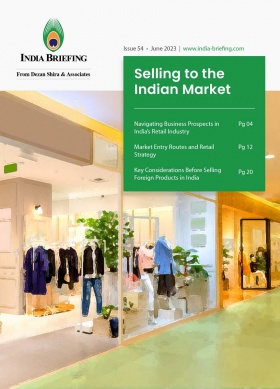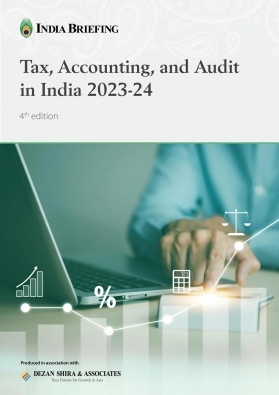India Reopens PLI India Scheme for Technical Textiles and MMF Apparel and Fabric
India has reopened the application window for the PLI Scheme for Textiles for Promoting MMF and Technical Textiles till August 31, 2023. This comes in response to textile industry stakeholders’ requests, following the withdrawal of previously approved beneficiaries and no new plants set up. India has also released updated HSN Codes in June 2023.
The Production Linked Incentive (PLI) Scheme for Textiles for Promoting MMF and Technical Textiles is designed to facilitate the establishment of sustainable enterprises and foster a competitive textile industry in India.
Specifically, India intends to advance the manufacturing capabilities of its man made fiber (MMF) apparel and fabrics and technical textile products under the PLI Scheme. Achieving this objective will enable the country’s textile industry to gain a larger market presence, enhance its global competitiveness, and generate employment opportunities. India hopes to achieve the target of US$250 billion-worth textiles production and US$100 billion in exports by 2030.
The Ministry of Textiles is now once again inviting applications from industry for selecting participants for the PLI Scheme. The new application window is open till August 31, 2023. This follows requests from various industry stakeholders. Previously, the government granted approval to 64 out of 67 investment applications falling under both the INR 1 billion and INR 3 billion categories. Despite this, no plant has been established even after a lapse of two years, as per reporting from Fibre2Fashion. Many eligible companies chose to withdraw their applications during this period.
The PLI Portal can be accessed here: https://pli.texmin.gov.in/mainapp/Default
After screening of the applications, the ministry shall publish the list of selected entities on the basis of recommendation of a Selection Committee under the Chairmanship of Secretary Textiles.
All the terms and conditions that were previously communicated through notifications and guidelines will continue to be in effect. Industry organizations had proposed easing the strict conditions of the PLI scheme. Nevertheless, during the review meeting conducted in the last week of June, the government rejected any relaxation on these conditions.
INVESTING IN INDIA – ONLINE BUSINESS GUIDE
This guide provides vital economic, geographic, and regulatory insights and guidance that business investors, managers, or expats need to understand India, and chart their path to a healthy business. Find spotlight and explainer articles, news updates and factsheets, useful tools, as well as webinars and videos featuring on-the-ground advisors that contribute to the Doing Business in India knowledge.
Details of the original scheme
Tenure and budget allocation
The scheme came into effect with its official notification in September 2021 and will offer incentives for a five-year period, spanning from FY 2025-26 to FY 2029-30. Scheme Guidelines for PLI Scheme for Textiles were issued on December 28, 2021 (see official document here).
The budget allocated for this scheme is INR 106.83 billion, which will be based on the incremental turnover achieved between FY 2024-25 and FY 2028-29. However, companies that meet both the investment and performance targets one year ahead of schedule will become eligible for the scheme one year earlier, starting from 2024-25 to 2028-29.
Eligibility criteria
The government has relaxed the eligibility criteria (February 2022). According to the new criteria, if a company was registered before the notification date of September 24, 2021, and had not yet commenced production, it would be considered a new company eligible for benefits under the PLI scheme. However, any investments made prior to the notification date will not be considered eligible investments.
The PLI Scheme for Textiles for Promoting MMF and Technical Textiles consists of two parts. In Part 1, a minimum investment of INR 3 billion and a minimum turnover of INR 6 billion are required. In Part 2, the minimum investment is INR 1 billion, and the minimum turnover required is INR 2 billion. A total of 67 applications were received for the scheme, with 15 applications falling under Part 1 and 52 applications falling under Part 2.
Application requirements
The applicant must possess PAN/GST/DIN credentials. Participating companies are obligated to meet the minimum value addition requirements within their registered factory premises as stipulated by the scheme. The applicant must declare the specific ITC HS lines/Technical Textiles Products they intend to manufacture in their new participating company, and once selected, they must adhere to these lines/products throughout the duration of the scheme. Any changes to the selected lines/products will require prior approval from the Ministry of Textiles.
It is important to note that turnover generated from trading and job work will not be considered for incentives under the scheme.
Key criteria that will be examined during the application screening process are: 1) financial capacity of the applicant, 2) relevant experience and technical capacity of the applicant, 3) location of the manufacturing activity, 4) investment [Part 1 or Part 2], 5) additional direct employment in the first performance year, and 6) product line.
Besides the technical guidelines, interested applicants can access the following information from the PLI Portal: required documents and sample application format.
Location assessment – category of cities
|
Group ‘A’ cities |
Group ‘B’ cities |
Group ‘C’ cities |
|
|
All other cities in India except Group A & B cities |
Under the scheme, a change in location from Category A to Category B or C is permitted. Applicants in Category B can switch to Category C but not vice-versa. Nevertheless, if a proposed unit intends to relocate its investment to the upcoming PM-MITRA Park, such a move will be allowed without altering the time period specified in the scheme. Prior permission from the Ministry of Textiles is mandatory for participants to change their location.
FDI
Foreign (non-resident) investment in the participant’s company must adhere to the guidelines specified in the Consolidated FDI Policy 2020, as updated periodically.
Calculation of incentive
The incentive shall be computed as follows:
Net Incremental Sales within cap of Notified Product(s) excluding taxes x Rate of Incentive in percentage for the Performance Year
Where,
- Notified Product(s) shall be as defined in this Scheme and stated in the “Letter of Approval” issued to the selected Participant.
- Net Incremental Sales shall be Turnover of the Participant in the Notified Product(s) manufactured by the Participant company minus the Turnover for Notified Products of the Participant in the immediate preceding year during Scheme period.
- In case of captive consumption of Notified Product(s) or sale of Notified Product (s) by the applicant to group companies, the gross turnover of Notified Product(s) shall be computed as under:
(a) Notified Products invoiced as per GST rules for sale shall only be considered for incremental turnover. In case of captive consumption of upstream products manufactured by the Participant, no incentive will be payable.
(b) In case a Participant is selling the Notified Products to a group company and also to a non-group company, sale price offered to group or non-group company, whichever is lower, shall be considered for determining total value of transaction between
the related parties. - Invoices generated from 1st April to 31st March of Performance Years shall be taken into account for the calculation of incentives for that Financial Year.
- The onus of realization of sales’ proceeds through normal banking channels shall be with the Participant. Ministry of Textiles reserves the right to verify the documents evidencing realization of sale proceeds which will be counted for computing Participant’s
turnover and incentives, and take suitable recovery and penal action in case of any default on realization of sale proceeds.
PLI Scheme for Textiles – Applications already approved
The government has selected 64 beneficiaries, who will receive incentives as long as they meet the scheme’s stipulated criteria for the duration of the PLI Scheme. The list of selected applicants can be seen here. Per media reports, some of these companies have backed out / have not met the scheme targets.
New HSN Codes released June 2023
On June 9, 2023, the Ministry of Textiles notified amendments to the list of technical textiles products (see official document here). It provided the HSN Codes and their description where this was not yet clarified under Appendix-IC of scheme guidelines dated December 28, 2021.
The HSN Codes are released for products in the following 10 technical textile segments:
- Geo-textiles – geo-grids, geo-nets, geo-membranes, geo-tubes, geo-bags, geo-textiles made from natural fibers.
- Agro-textiles – shade-nets, mulch-mats, anti-hail/anti-bird/anti-fog protection nets, fishing nets, crop covers.
- Medical/hygiene textiles – body diapers, sanitary napkins, surgical dressings, bandages, wound care products, compression stockings for varicose veins, surgical sutures.
- Defense textiles – bullet proof jackets, vests, and uniforms, nuclear, biological, chemical warfare suits, high visibility clothing and infra-red clothing for military use, high altitude clothing, fighter aircraft clothing, tents, parachutes, collapsible textiles housing for military use, special masks, including gas masks, helmets and safety equipment for military use.
- Mobile textiles – safety airbags for automobiles, automobile tire cords, seat webbing for automobiles and aircrafts, air and oil filters for automobiles, railways, coach, aircraft.
- Sports textiles – parachute fabrics/ballooning fabric for sports use, sailing cloth, protective equipment for cricket, boxing, and other sports (leg guard, batting gloves, thigh pad).
- Protective textiles (other than defense textiles) – personal protective equipment for medical use, fire retardant/fire protection clothing, chemical/petrochemical protection clothing, electric arc protection clothing, fire retardant fabrics, industrial gloves, industrial protection clothing, including high visibility clothing for non-military use, N-95 and N-99 masks (FFP-2 and FFP-3 masks), gas masks.
- Building/construction textiles – wall coverings, awnings and canopy.
- Specialty fibers and composites – carbon fiber, aramids, meta aramids, para-aramids, nylon 66, glass fibers, basalt fibers, ultra high molecular weight polyethylene, composites made out of carbon fibers, acrylic or modacrylic, glass fibers.
HSN Codes for certain products are yet to be notified: Turf protection nets [Agro-textiles segment], sub-marine clothing [Defense textiles segment], architectural membranes, floor coverings for special purposes, such as fire retardant, fire resistant, chemical resistant, anti-static and dust resistant/and composite board for train coaches [Building/construction textiles], and the segment for Smart Textiles embedded with active devices for medical, defense and special uses.
For HS Codes for Product List of MMF Apparel (Appendix-IA) and Product List of MMF Fabric (Appendix-IB), refer to the December 28, 2021 Approved Guidelines for PLI Scheme for Textiles.
The same document also includes a Product List of Technical Textiles Products with HSN Code (Appendix-IC), which has been updated in the June 2023 amendment.
About Us
India Briefing is produced by Dezan Shira & Associates. The firm assists foreign investors throughout Asia from offices across the world, including in Delhi and Mumbai. Readers may write to india@dezshira.com for more support on doing business in India.
We also maintain offices or have alliance partners assisting foreign investors in Indonesia, Singapore, Vietnam, Philippines, Malaysia, Thailand, Italy, Germany, and the United States, in addition to practices in Bangladesh and Russia.
- Previous Article India-France Strategic Partnership: Horizon 2047 Roadmap, Trade, and Investment
- Next Article Meeting the July 31 ITR Filing Deadline for AY 2023-24 in India: Implications for Businesses








